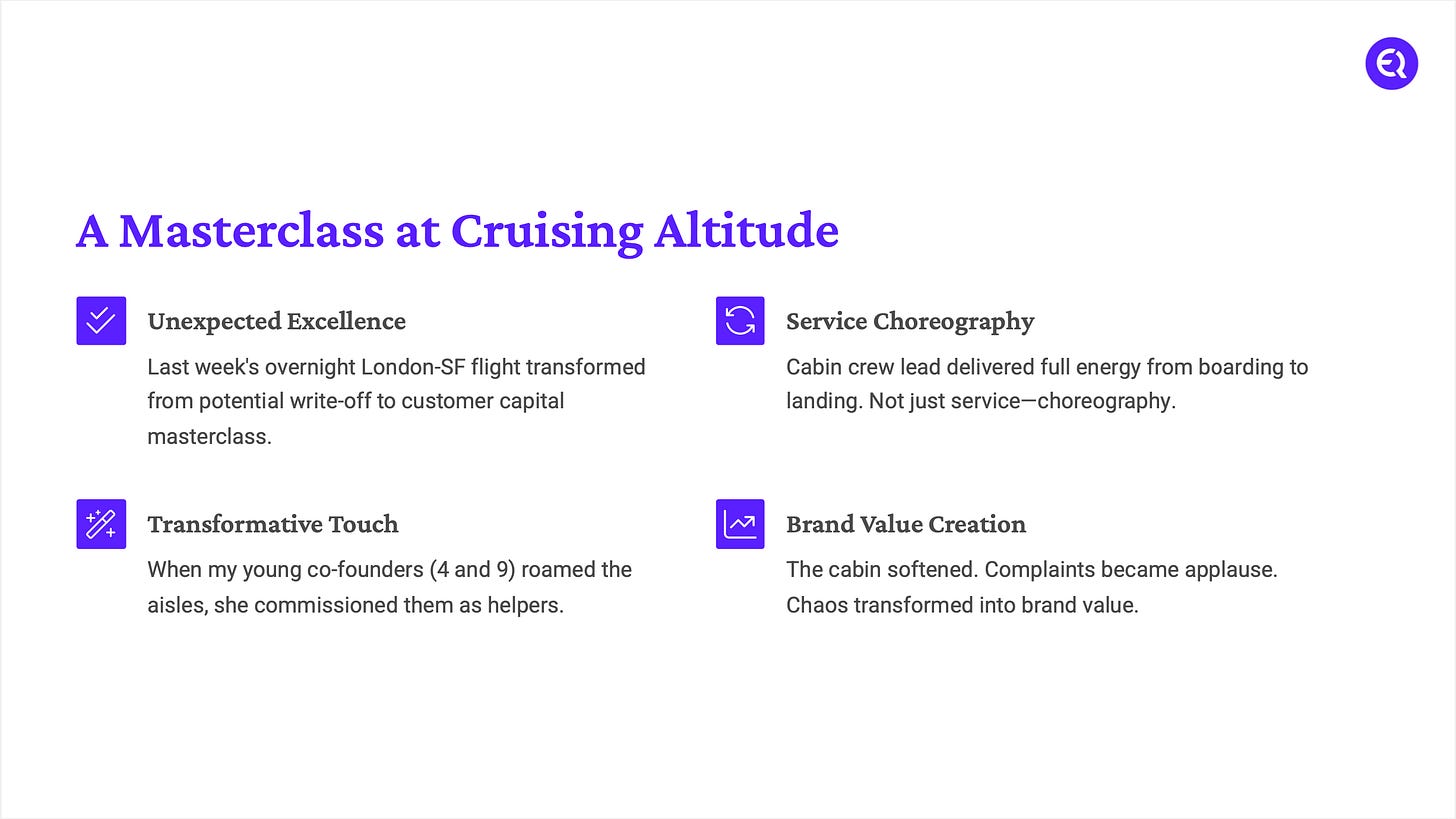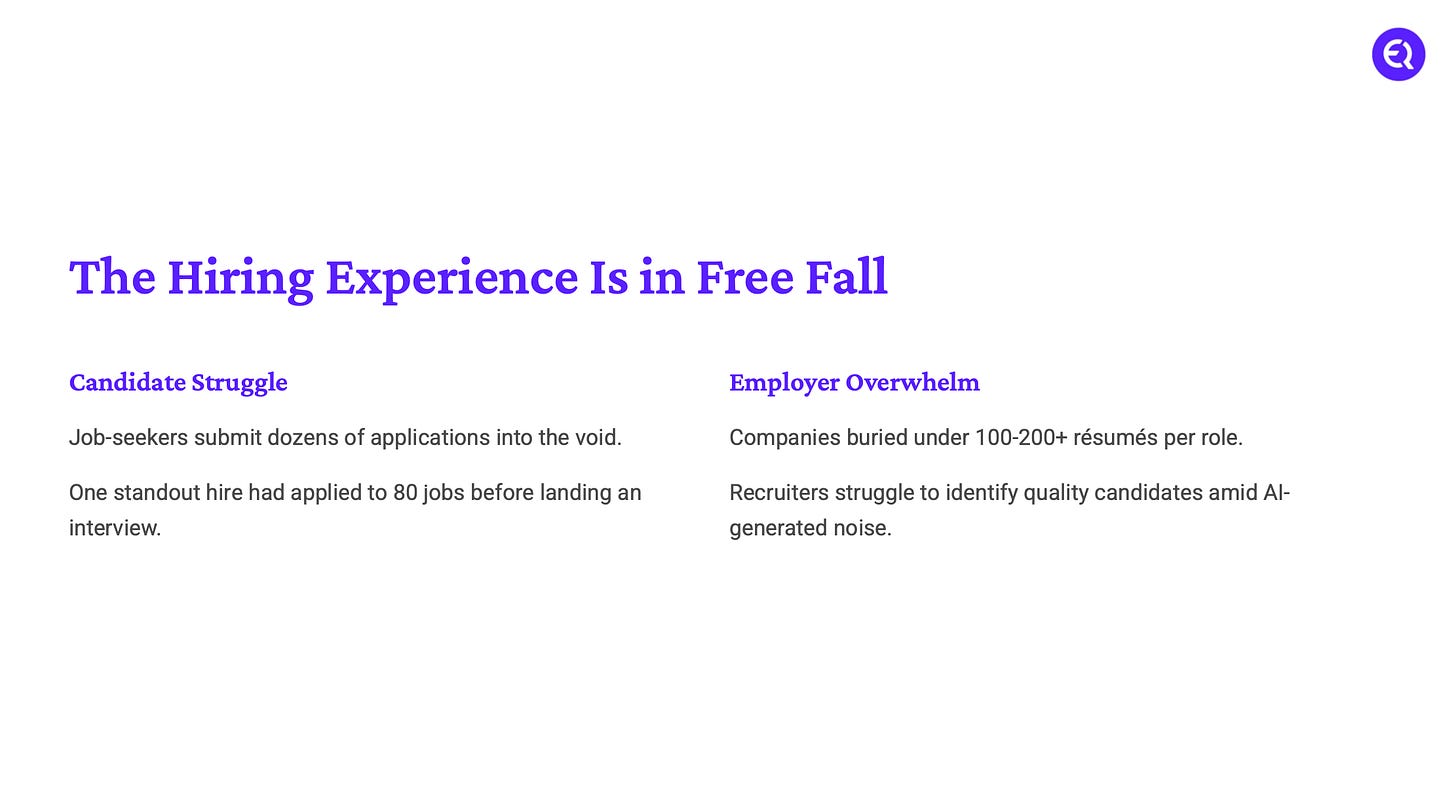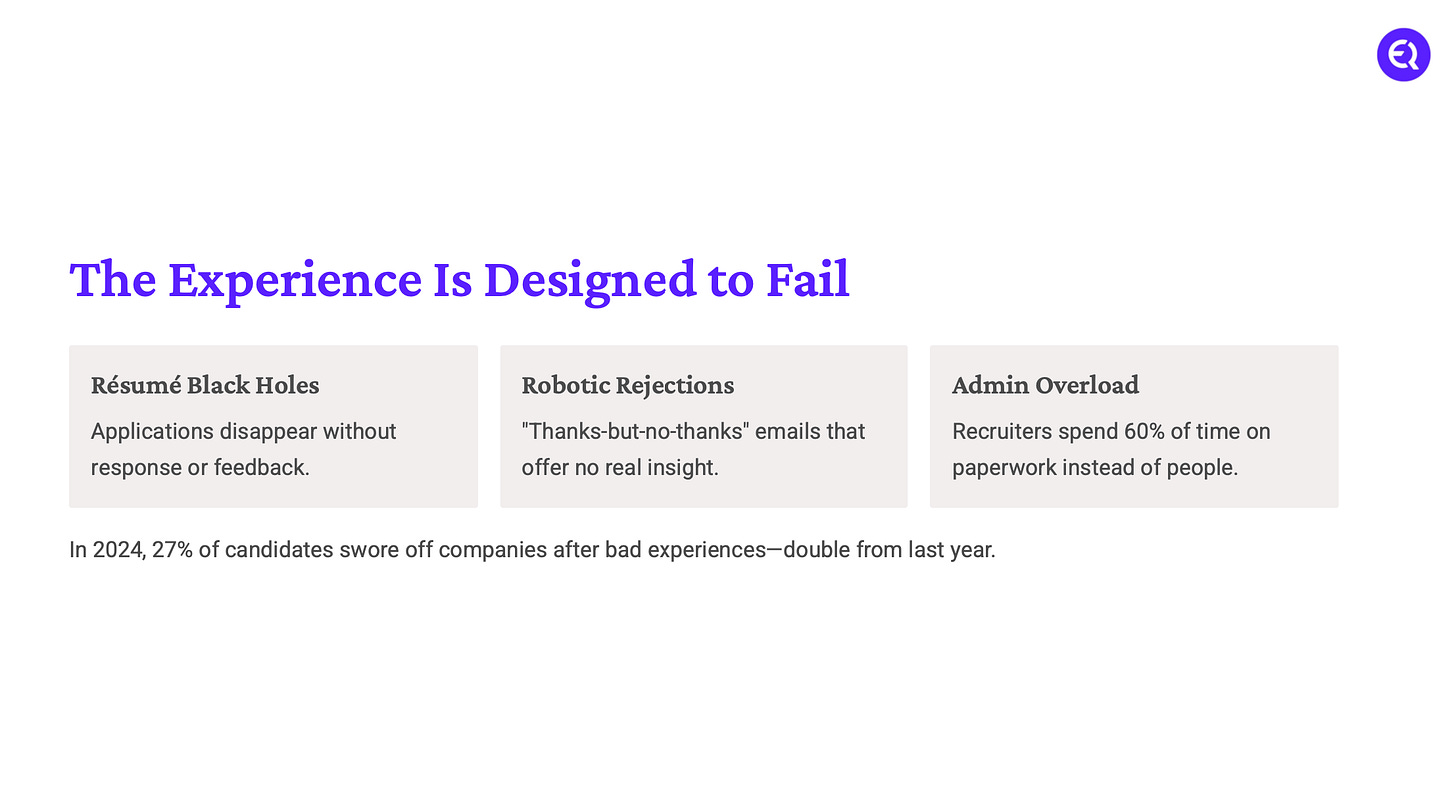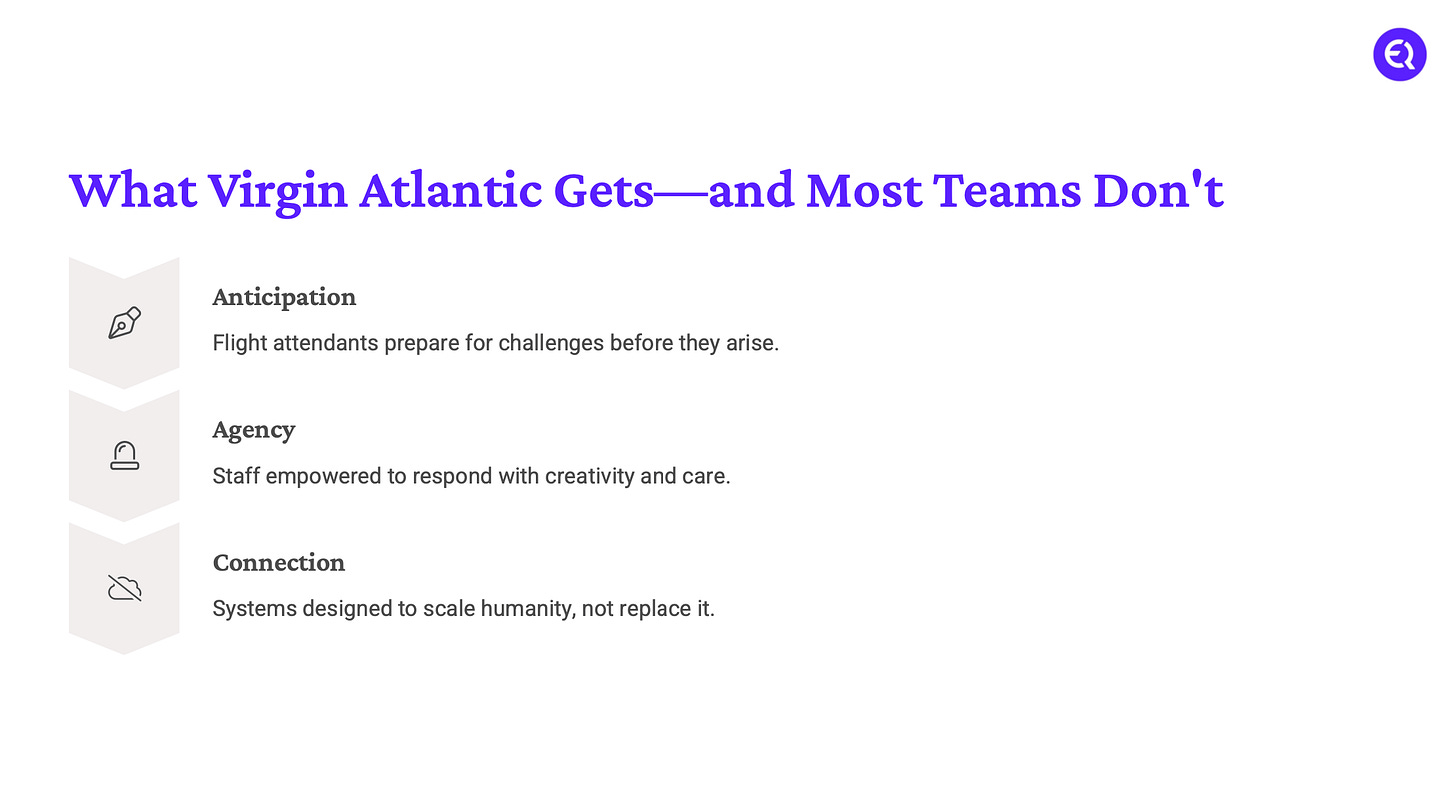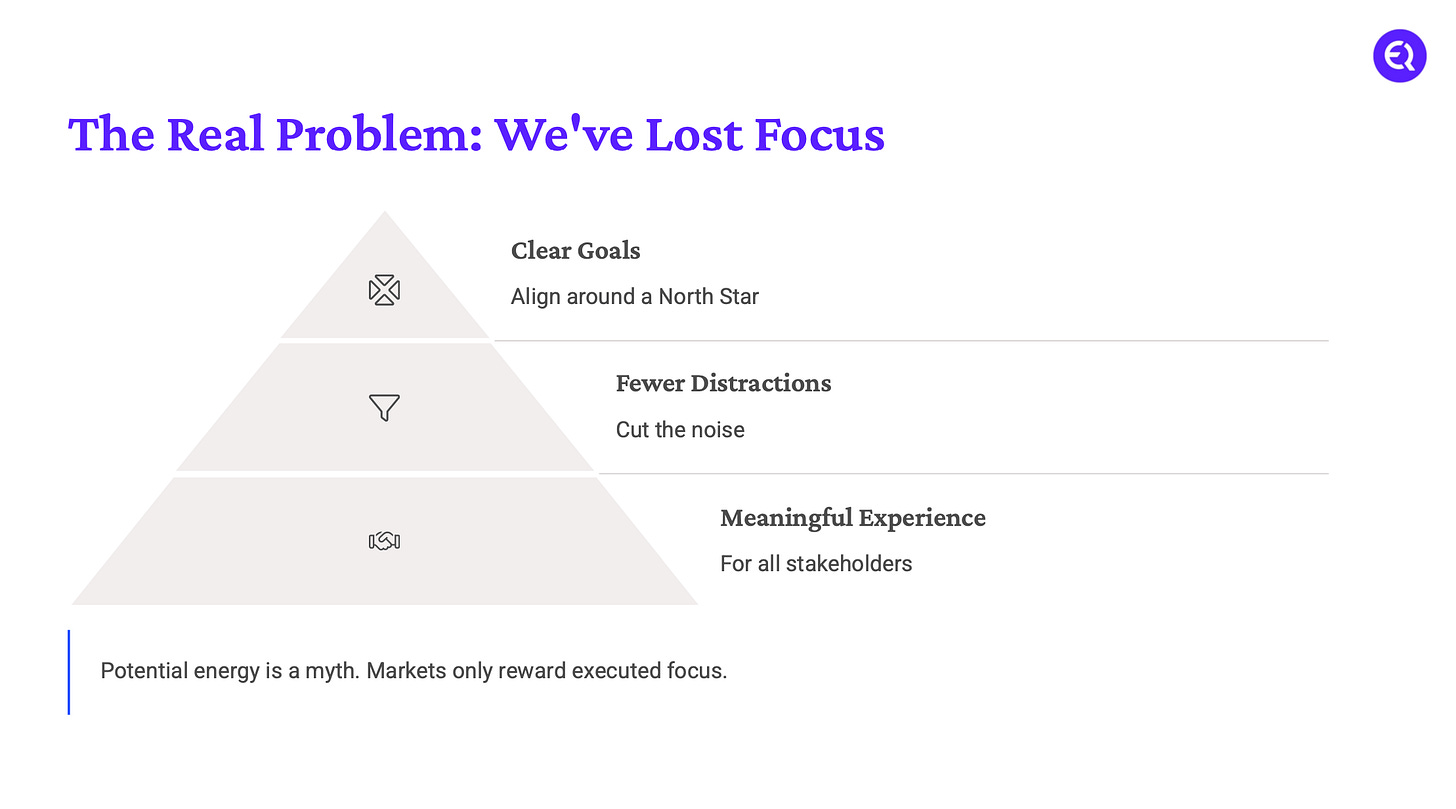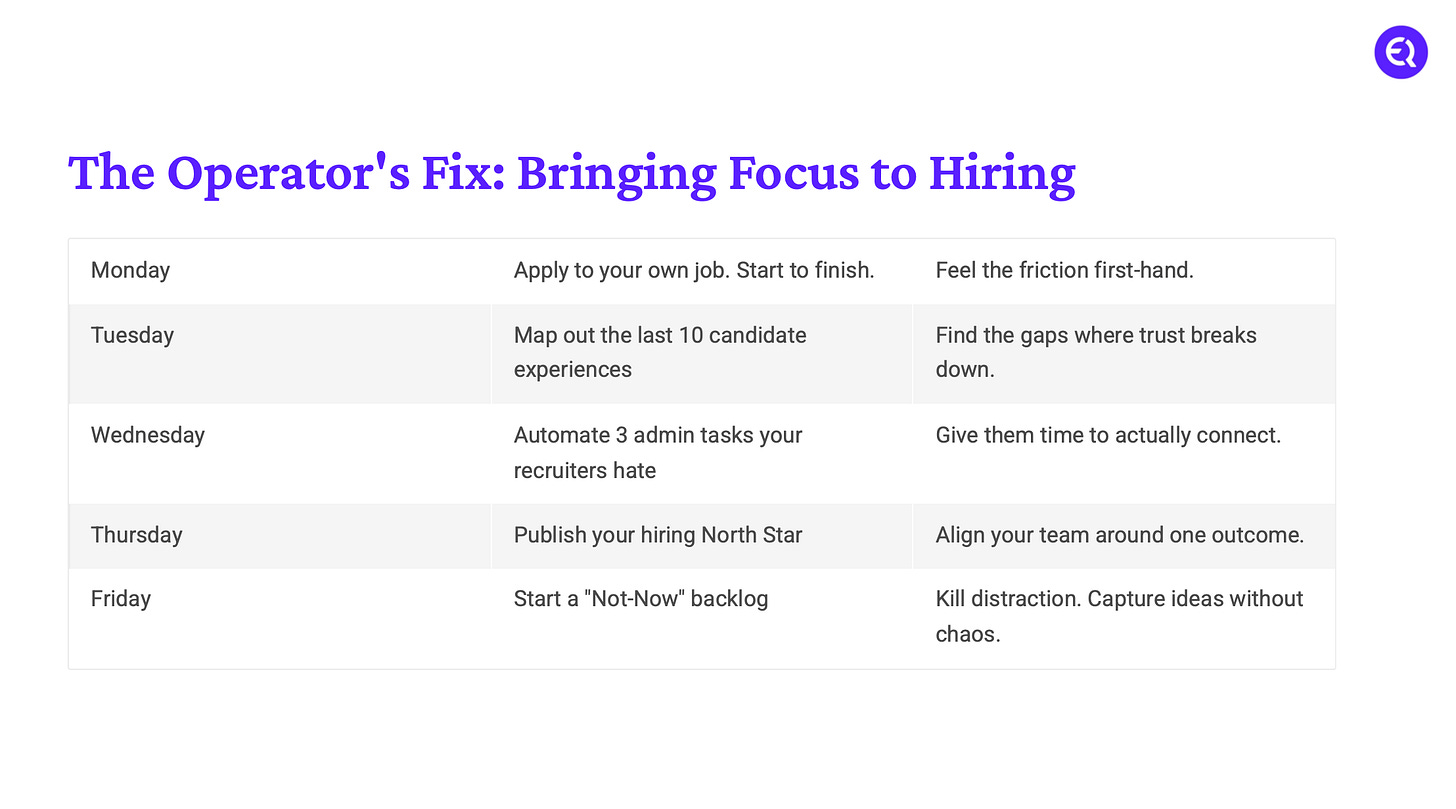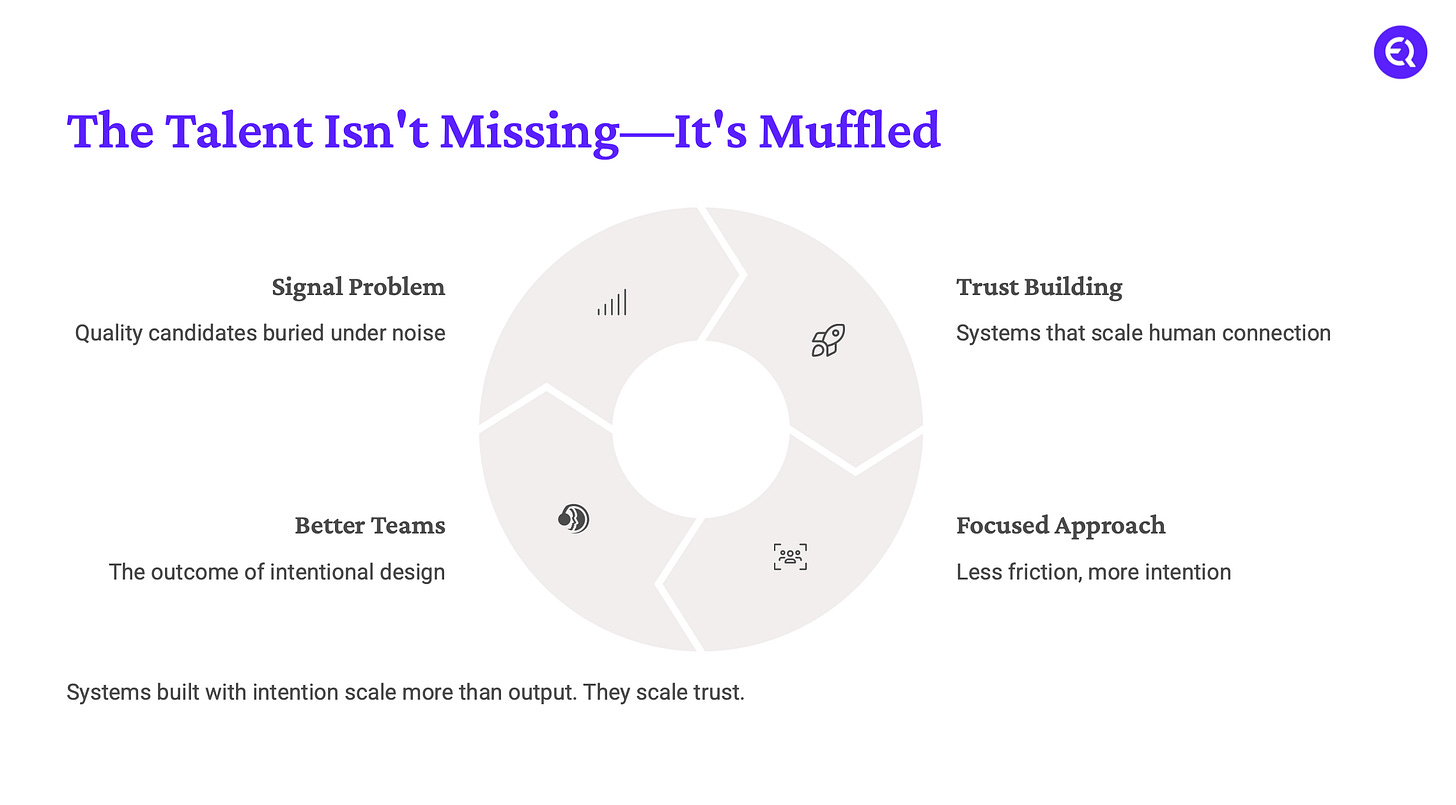How In-Flight Service Exposed the Hiring System’s Biggest Flaws
From 36,000 Feet to the Frontlines of Recruiting: How Focus, Energy, and Human Design Can Fix a Broken System
I didn’t expect a red-eye flight from London to San Francisco to teach me anything. Middle seat. Stale air. Overtired kids. You know the drill.
But then something remarkable happened.
✈️ A Masterclass at Cruising Altitude
A Virgin Atlantic crew lead ran what I can only call a clinic in culture. Not customer service—service choreography. When my two young co-founders (ages 4 and 9) began roaming the aisles, she didn’t shut it down. She turned it into theater. Within minutes, they were passing out chocolates in kid-sized Virgin aprons.
The cabin softened. Passengers smiled. Applause broke out mid-flight.
She didn’t just manage the moment. She transformed it.
Virgin didn’t wing this magic. They built for it—through rituals, training, and systems that empower frontline workers to own the customer experience. It’s culture as a conversion engine.
🌍 Back to Earth: The Hiring Experience Is in Free Fall
Two days later, I was back on the ground—and back in hiring mode.
I’d just brought on two standout team members. Here’s the punchline: one had applied to 80 jobs, the other to 30. And the only interview either of them landed… was with me.
That’s not rare. That’s normal now.
Job-seekers submit dozens of applications into the void to get a single reply—often a rejection with no feedback. At the same time, employers are buried under 100–200+ résumés per role, trying to decode who’s real and who’s AI-generated noise.
We’ve created a system where everyone loses:
Candidates feel ghosted.
Recruiters feel buried.
Hiring managers feel stuck.
And the result?
The best people often never even get seen.
🚫 The Experience Is Designed to Fail
Recruiting today isn’t broken by accident—it’s broken by design:
Résumé black holes.
Robotic “thanks-but-no-thanks” emails.
AI screeners that reject without reason.
Recruiters spending 60% of their time on admin instead of humans.
In 2024, 27% of candidates said a bad experience made them swear off a company entirely—nearly double the rate from the year before.
That’s not just a branding issue. It’s a talent pipeline collapse.
🧠 What Virgin Atlantic Gets—and Most Teams Don’t
What I saw on that plane wasn’t random. It was the result of systems that scale humanity.
That flight attendant didn’t wait for chaos to appear—she anticipated it. She responded with agency, clarity, and care. Because the company gave her room to do so.
Compare that to today’s recruiting systems:
Rigid workflows.
High-volume pipelines.
Zero room for authentic connection.
If we designed hiring like Virgin designs service, every candidate would feel seen. Every recruiter would have time to actually recruit. And trust—on all sides—would be earned, not assumed.
🎯 The Real Problem: We’ve Lost Focus
Founders love to talk about scale, speed, and market fit. But the deeper lever is focus—the ability to align teams, workflows, and systems toward a clear North Star.
Hiring today lacks that.
It’s bloated with tools. Fragmented by process. Drowning in noise.
We don’t need another dashboard. We need:
Clear goals.
Fewer distractions.
A hiring experience that means something—for candidates, recruiters, and decision-makers.
As a mentor once told me:
“Potential energy is a myth. Markets only reward executed focus.”
🧰 The Operator’s Fix: Bringing Focus to Hiring
Here’s how to start rethinking your hiring motion this week:
🧩 The Talent Isn’t Missing—It’s Muffled
We don’t have a hiring shortage.
We have a signal problem.
Talent is out there. But it’s buried under noisy applications, broken systems, and processes that prioritize speed over substance.
If you’re serious about building a great team, start by creating focus, not more friction.
What Virgin Atlantic showed me—and what recruiting needs to remember—is that systems built with intention scale more than output. They scale trust.
And that’s what turns good companies into unforgettable ones.



